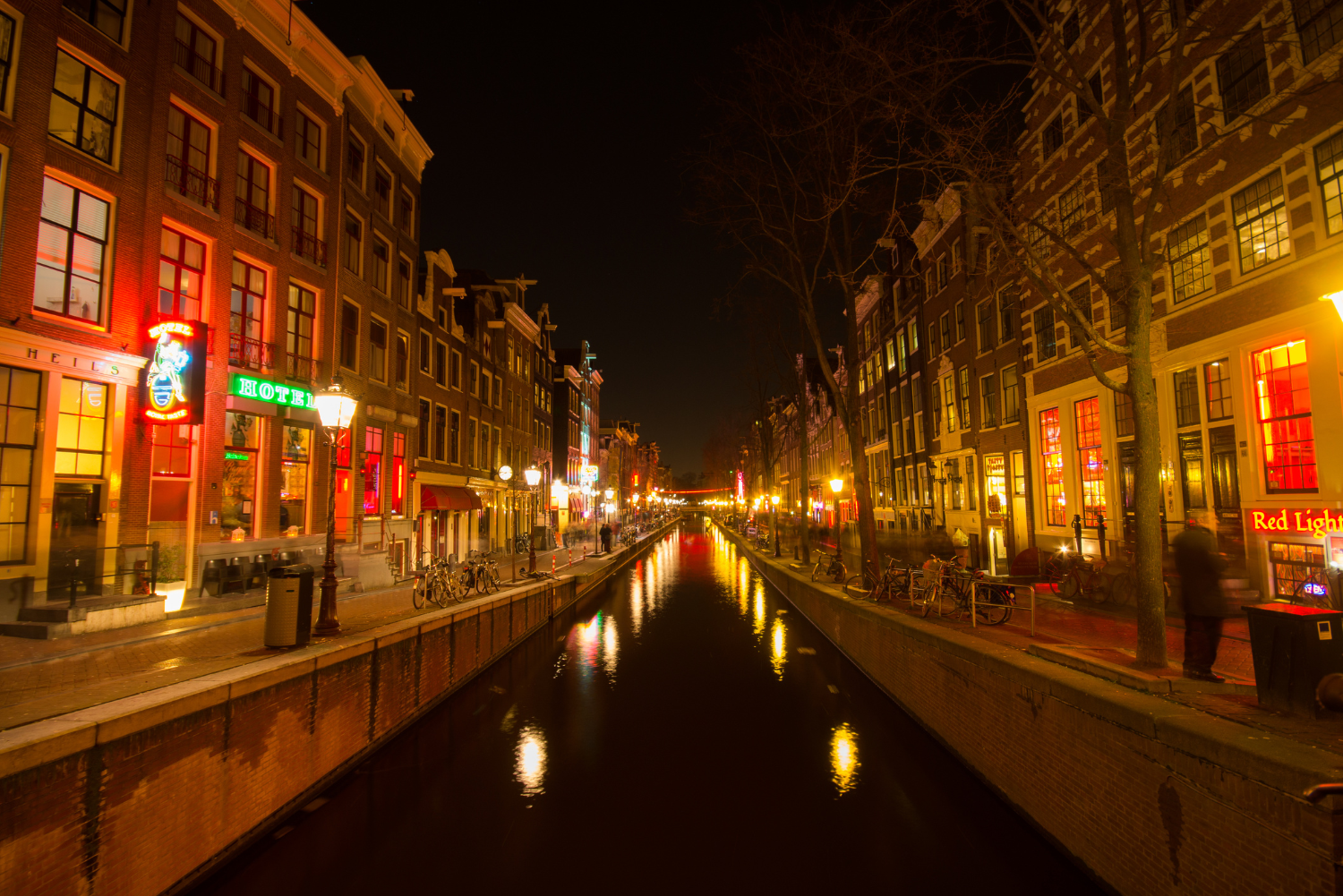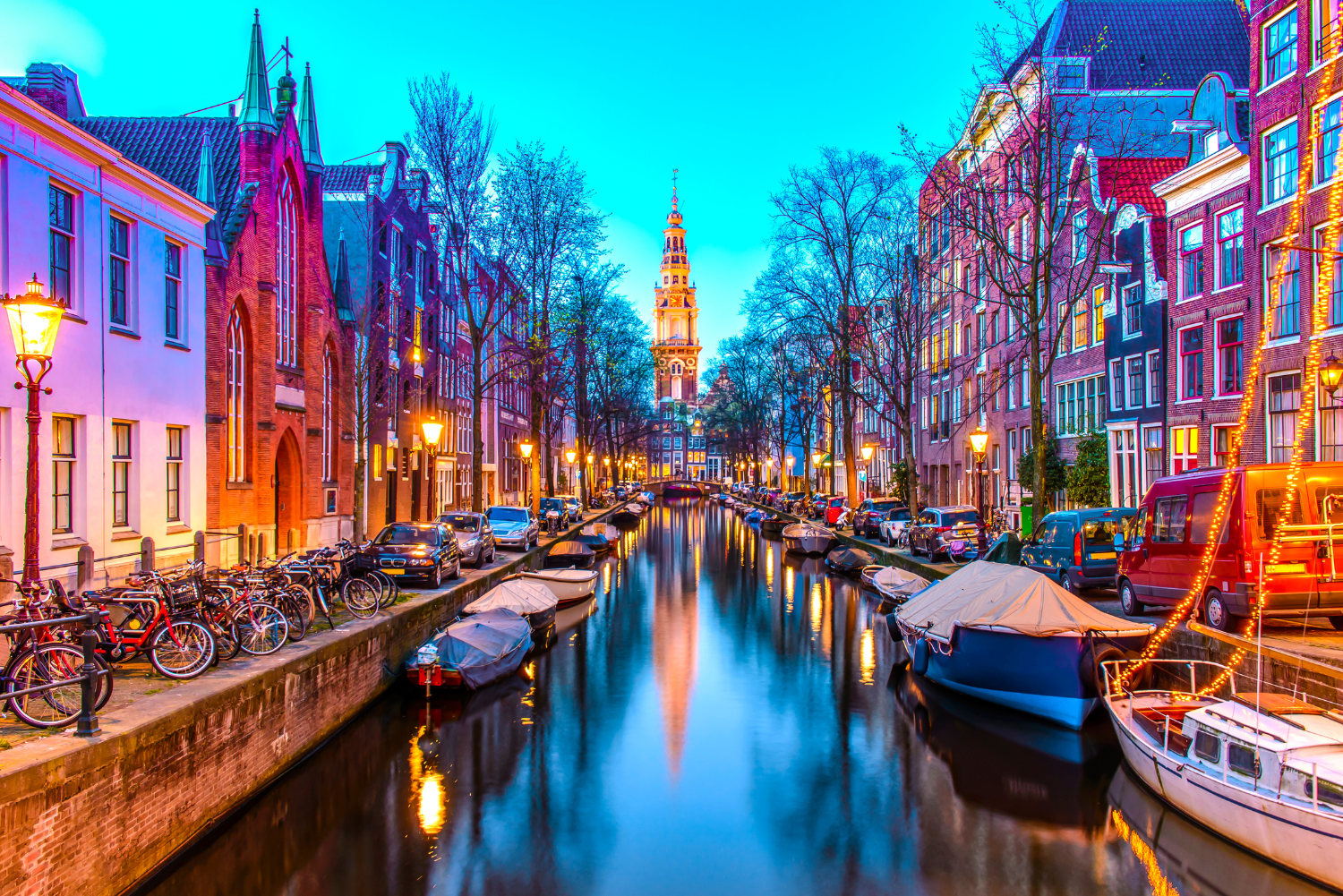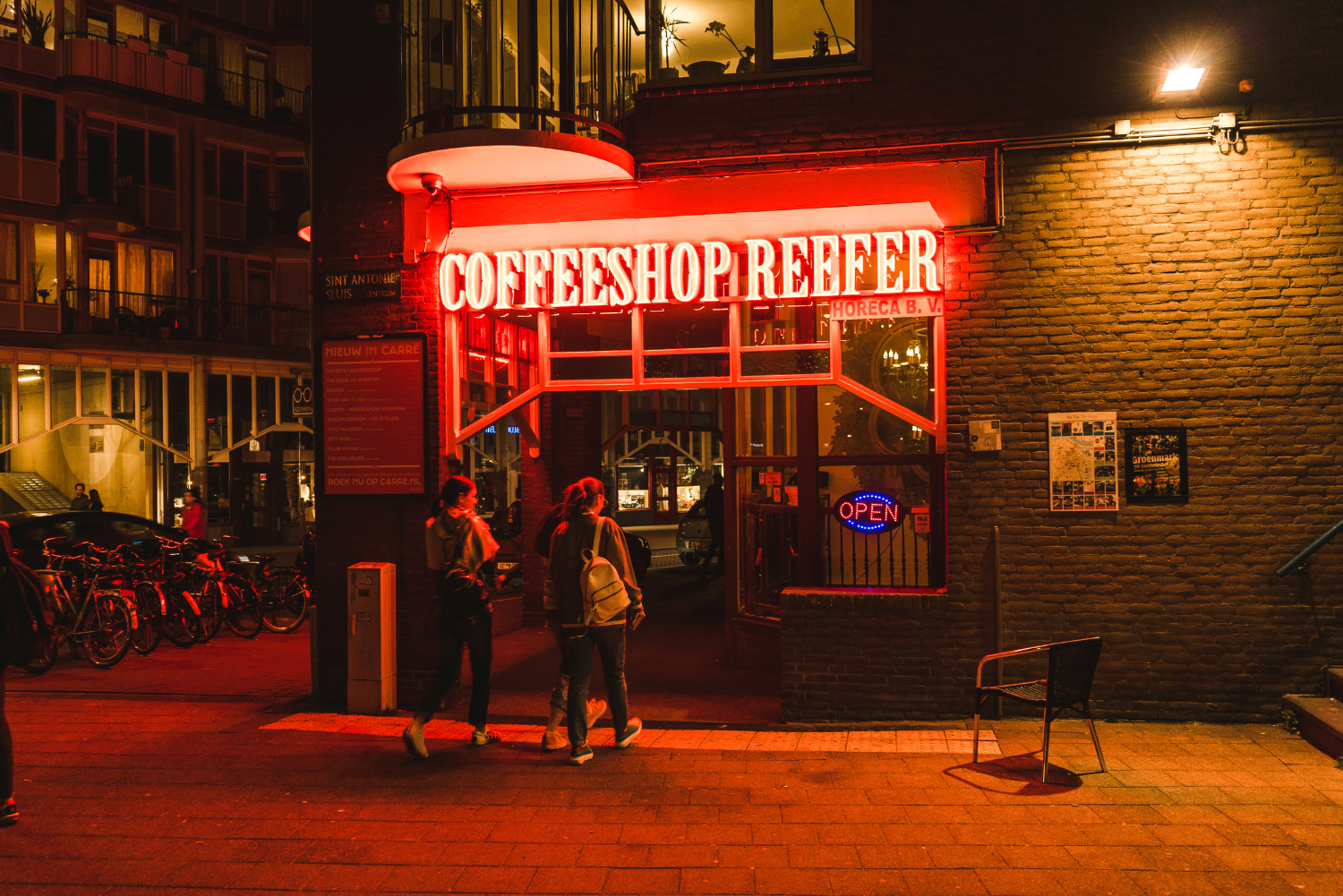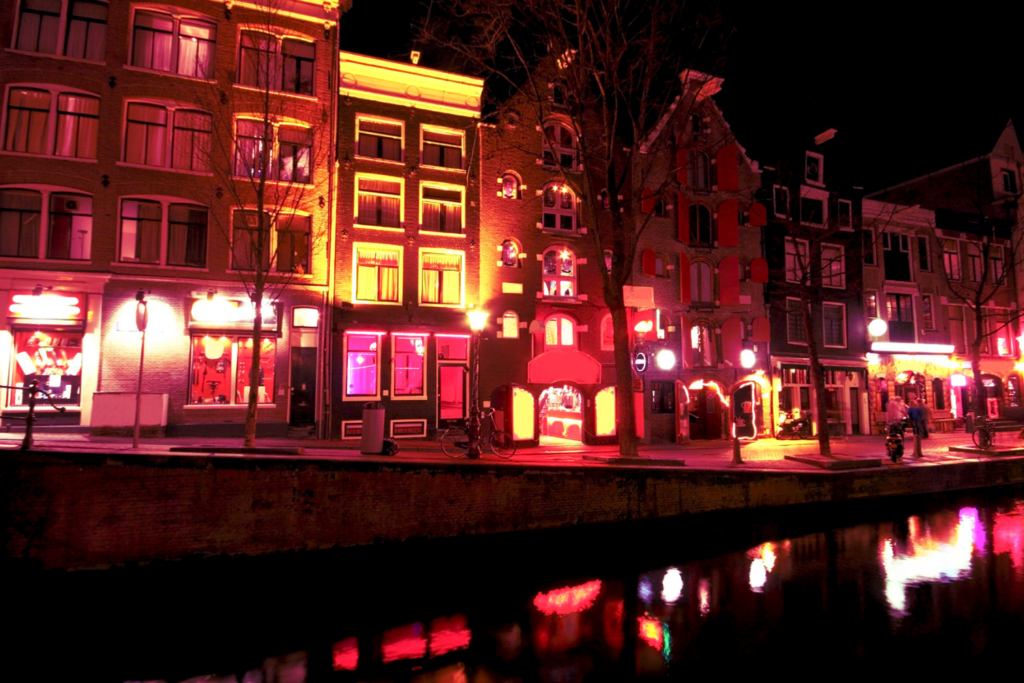The Red Light District Amsterdam, known as De Wallen, is one of the city’s most famous and controversial areas. Tourists are drawn to its vibrant nightlife, historical landmarks, and the unique experience of legal sex work.
In this guide, we’ll explore what you can expect when visiting the Red Light District Amsterdam - from its history and main attractions to safety tips and cultural norms.
Red Light District Amsterdam: Essential Guide & Tips
Amsterdam’s Red Light District, known locally as De Wallen, presents a truly distinctive section of the city that leaves a lasting impression.
Bathed in the glow of red neon lights along its cobbled pathways, this district is immediately identifiable and exudes an unmistakable ambiance.
Attractions range from sex shops and peep shows to museums offering cultural insights — all amidst diverse lodging options suitable for every budget.
The allure of this light district isn’t limited to those after dark adventures alone. It encompasses historical sites brimming with stories waiting to be discovered.
Anyone seeking out the singular atmosphere fostered by sex-centric businesses under the shimmering red light will uncover a plethora of services and recreational possibilities that beckon any visitor traversing Amsterdam’s streets – making it an essential experience within this vibrant metropolis.
What is the Amsterdam Red Light District?
Amsterdam’s Red Light District stands as more than a mere point of interest for travelers. It is an integral component of the city’s historical and cultural tapestry.
This district exudes a spirited vibe, offering services typically regarded as taboo elsewhere across the globe.
The streets here teem with curious tourists and locals who witness women positioned behind windows, presenting their services to those strolling by.
With roots stretching back through the centuries, this area presents an engrossing chapter of Amsterdam’s past worthy of exploration.
Did you know?
Since its inception in the 14th and 15th centuries when sailors were frequent patrons, up until its current recognition as a celebrated global destination, the light district has remained a defining element within Amsterdam’s fabric—a place often bathed in natural daylight.
Those venturing into this lively quarter are greeted with bustling nightlife activities punctuated by significant historical sites amidst one of Amsterdam’s most time-honored neighborhoods.
The essence of history merges seamlessly with contemporary allure inside this distinctive locale—providing visitors from around the world with unparalleled experiences that fuse tradition and modern vibrancy.
What you need to know about the red light district
The Red Light District, with De Wallen at its core, stands out as an intriguing part of Amsterdam rich in historical significance.
The district goes beyond just the iconic red neon lights and window-based prostitution. It houses several notable landmarks and sites that are key to understanding the city’s heritage.
As tourists meander through the quaint cobbled streets of this area, they’re greeted by a tapestry woven from tales across time.
De Wallen juxtaposes historic charm against contemporary allure, establishing itself as an essential stop for those desiring to capture Amsterdam’s authentic vibe.
History of the Wallen / Red Light District
The roots of De Wallen can be traced to the year 1270, when a bridge connecting the islands of Amsterdam was constructed. This development marked the inception of what is now known as Amsterdam’s Red Light District.
By 1385, it had become an area synonymous with providing sailors leisure and company while they awaited their ship departures. Over time, despite numerous efforts to control or prohibit prostitution, De Wallen continued to flourish as a center for the sex trade.
In the 17th century, during peak times following ships’ arrivals from the East Indies, it was estimated that up to a thousand women were engaged in offering sexual services within De Wallen.

Although there have been many transformations throughout its history, this district has consistently maintained its fundamental association with prostitution.
Presently, De Wallen serves not only as evidence of Amsterdam’s liberal stance towards sex work, but also embodies its deep-rooted historical significance connected with these practices.
Key Landmarks and sights at de wallen
The ancient Old Church, or De Oude Kerk, stands out as a significant beacon within De Wallen.
As the oldest structure in Amsterdam, it provides an intriguing counterpoint to the vivid red neon lights and vibrant ambiance that characterize the heart of this district.
Exploring Into De Wallen reveals numerous blocks filled with slender streets and passageways teeming with individual history and appeal.
Together with The Old Church and other prominent sights, these features weave together to form a colorful mosaic that encapsulates both the historical essence and the contemporary pulse of Amsterdam.

Exploring the Red Light District in Amsterdam can present a unique experience. The district truly springs to life when night falls, bustling with activity from around 11pm until the dawn’s early hours.
Renowned for its distinctive glow emanating from windows where sex workers interact with patrons, this area also features an assortment of quirky stores and informative guided tours shedding light on its historical backdrop.
It’s important for both newcomers and experienced tourists alike to grasp how to navigate this district effectively while prioritizing personal safety.
Getting There
The journey to the Red Light District from Amsterdam Central Station is simple. Depart by walking southward along Damrak, proceed to Dam Square, and make a left onto Warmoesstraat.
As another route, continue on the principal road and take a left turn at the bridge that comes after it.
To get close to the district using public transportation, you can board trams numbered 4, 9, 16, 24 or 26 which all have stops at Dam Square—a brief stroll will then lead you to this famous area of Amsterdam’s red light zone.
Look out for Oude Kerk. Its prominent position makes it an excellent reference point when navigating through this iconic neighborhood.
Safety Tips
Ensuring safety is paramount when visiting the Red Light District. With the area being monitored by police and bolstered with more than 50 surveillance cameras, a layer of security is provided for those who explore this district.
Despite these measures, it’s crucial to remain alert to pickpockets, particularly in areas where people congregate densely. Secure your possessions and maintain awareness at all times.
Maintaining low noise levels during your visit to the light district will help respect the peace of local inhabitants. Adhering to this guidance can contribute to a secure and enjoyable experience in the red light zone.
Attractions Beyond the Windows
The district known for its sex shops and window prostitution is not limited to these activities. It’s a vibrant area teeming with a mix of museums, cultural establishments, and numerous forms of amusement that appeal to diverse preferences.
Beyond the characteristic red neon lights illuminating the locale, one can discover an eclectic array of institutions celebrating sexual history and culture along with energetic bars and eateries, providing visitors with a richly layered encounter within the light district.
Museums and Cultural Venues
Amsterdam’s Red Light District is home to a number of intriguing museums that explore different facets of human sexuality and cultural practices.
Insidertip voor Amsterdam:
A prime example is the Sex Museum, which presents an array of captivating displays charting the progression and historical context of human sexual behavior.
There’s the Cannabis Museum located in this renowned district, offering insights into cannabis’ historical role and its impact on Amsterdam’s culture.
These institutions offer visitors a distinctive vantage point on the area’s rich cultural tapestry and are essential destinations for those with an eagerness to learn.
Entertainment Options
The Red Light District is known for more than its museums, providing a variety of nighttime amusements suitable for various preferences.
The district’s peep shows offer an unusual and intimate entertainment form, with performances that typically cycle through as spectators watch from secluded booths.
The area’s strip clubs and theaters regularly present live acts and shows aimed at mature audiences, contributing to the lively night-time atmosphere.
This diverse selection of nocturnal activities guarantees that guests can find numerous options for an unforgettable evening within the light district.
Understanding the Sex Trade
The red light district in Amsterdam is an operational area that facilitates the sex industry within legal boundaries. The city has concentrated on improving safety, health, and self-sufficiency for sex workers since prostitution became legal in 2000.
When visiting this neighborhood, it’s important to treat it with respect and decency, acknowledging that the professionals engaged in the sex trade deserve politeness and empathy.
A deeper awareness of the intricacies involved in supporting these workers can enhance one’s view and experience when exploring Amsterdam’s renowned red light district.
Legal Framework
Amsterdam’s adoption of laws legalizing prostitution represents a forward-thinking stance on the sex trade, setting it apart from many other regions globally.
The ‘Red Light District’ is named after the distinctive red neon lights that signify where sex workers can be found, although soliciting on the street remains prohibited.
Sex workers in Amsterdam must register as self-employed individuals and contribute to taxes, ensuring their compliance with regulations.
Organizations such as PG292 offer various forms of assistance to those in the profession to help navigate both personal and occupational hurdles.
Did you know?
Throughout history, there have been diverse approaches towards managing the sex industry – from Napoleon sanctioning brothels along with compulsory medical examinations for prostitutes to Project 1012 initiated in 2007 aiming at Decriminalization of prostitution while purging illicit activities from its midst.
These initiatives underscore an enduring dedication towards fostering a secure and orderly framework for sex workers operating within Amsterdam’s light district.
Health and Welfare
Ensuring the health and welfare of sex workers is a priority in Amsterdam’s Red Light District.
A licensing system requires businesses to submit detailed safety plans, and joint inspections by city authorities and health organizations provide ongoing support.
Sex workers are briefed on risks, Social Security, and alternative job options upon registration, helping them make informed decisions about their profession.
These measures contribute to a safer working environment and better overall welfare for those involved in the sex trade.
You Might Also Like:
We've conducted an article about the top activities and attractions to visit at The Dam Square, Amsterdam. Click the link to read the full article!
Coffee Shops and Soft Drugs
Amsterdam’s Red Light District is also famous for its vibrant coffee shop culture, where both locals and tourists gather to relax and socialize.
However, recent regulations have changed the landscape, with a ban on public marijuana smoking implemented on May 25, 2023.
This new rule affects how visitors enjoy their cannabis, as public consumption is no longer allowed in key areas of the city, including the Red Light District.
Despite these changes, coffee shops remain a significant part of the district’s social and cultural fabric.
Best Coffee Shops
The Bulldog and Dampkring stand out as celebrated coffee shops within the Red Light District.
As one of the pioneering establishments in the area, The Bulldog has gained notoriety for its chilled vibe, becoming a landmark spot.
Meanwhile, Dampkring is renowned for its distinctive atmosphere that draws in both tourists and residents eager to partake in cannabis while soaking up the leisurely setting.
Functioning as casual gathering places, these coffee shops offer patrons a space to relax and immerse themselves in the distinct character of the light district.

New Regulations
As of May 25, 2023, Amsterdam has implemented a ban on smoking marijuana in public places within the old city center. This encompasses the famed Red Light District and carries a penalty of €100 for those who violate this new law.
The intention behind this restriction is to decrease instances of public nuisance while promoting more conscientious use specifically in licensed coffee shops.
Tourists planning to visit Amsterdam’s historic light district should remain aware of these regulations to avoid any disruptions during their stay in the city.
Respecting the Red Light District
It’s imperative to honor the ethos of Amsterdam’s Red Light District to foster a mutually respectful environment for tourists and residents alike.
This unique sector seamlessly integrates interactive leisure with indigenous traditions, making it essential that visitors be mindful of regional practices — including abstaining from photographing sex workers and adopting an attitude of courtesy — thereby nurturing a convivial yet dignified ambience within the district.
Adherence to these norms enables guests to appreciate the distinct charm of the red light zone while reinforcing community standards aimed at safeguarding a secure setting for all individuals involved.
Do's and Don'ts
During your visit to the Red Light District, adhering to certain behavioral guidelines is crucial for maintaining a respectful atmosphere.
Did you know?
Do not take pictures of sex workers. This action is firmly banned and can provoke severe altercations.
Show respect towards sex workers by refraining from bothering them when their curtains are drawn and by not standing idle in front of their windows.
It’s also important not to engage in idle chatter with sex workers unless you plan on utilizing their services.
It is typically advised that families avoid taking children into the district as it encompasses adult-oriented content.
Responsible Tourism
Engaging in responsible tourism within the Red Light District requires recognizing and honoring the area’s cultural significance, rather than perceiving it merely as a sightseeing spot.
Demonstrating consideration and esteem aids in preserving the community’s essence while bolstering initiatives to create a secure setting.
Embracing a tolerant mindset paired with respectful curiosity allows visitors to positively enhance the district’s distinct societal fabric when exploring this unique light district.
Accommodation Options
Securing an ideal accommodation in the Red Light District is a breeze, as there’s an extensive selection to suit various tastes and financial plans.
This variety includes everything from economical hostels for those watching their expenses to opulent hotels offering premium comforts.
In pursuit of either a cozy hotel room or an extraordinary experience on a houseboat, visitors will find ample choices catering to their individual desires within this animated segment of Amsterdam.
Hotels en hostels
The Wallen, also known as the Red Light District, offers a variety of accommodations ranging from hostels to hotels, catering to different budgets and preferences.
Starting at around $40 per night, budget-friendly options like Frisco Inn and Hotel Damrak Inn provide cozy stays at economical rates near the vibrant neighborhood.
Summary
In summary, Amsterdam’s Red Light District is a unique blend of history, culture, and modern attractions.
From the vibrant nightlife and iconic red neon lights to fascinating museums and distinctive accommodations, there’s something for every traveler to enjoy.
By understanding the neighborhood’s historical background, respecting local customs, and exploring the variety of attractions beyond the windows, visitors can have a safe and unforgettable experience.
Embrace the district’s unique charm with respect and curiosity, and you’ll leave with a deeper understanding and appreciation of this iconic part of Amsterdam.
Frequently Asked Questions
How do I get to the Red Light District from Amsterdam Central Station?
The easiest way to get to the Red Light District from Amsterdam Central Station is to walk south on Damrak, head to Dam Square, and then take a left onto Warmoesstraat. If you prefer public transport, trams 4, 9, 16, 24, or 26 also drop you off at Dam Square, which is close by.
Is it safe to visit the Red Light District at night?
Yes, the Red Light District is generally safe at night due to a strong police presence and numerous surveillance cameras. Just stay vigilant for pickpockets and keep your belongings secure.
Are there any museums in the Red Light District?
Absolutely, the Red Light District has some interesting museums like the Sex Museum and the Cannabis Museum, both of which provide intriguing perspectives on sexuality and cannabis culture. It’s a unique way to explore the area’s history and themes!
Can I take photos in the Red Light District?
You definitely can’t take photos of sex workers in the Red Light District, as it’s not only frowned upon but can also lead to serious trouble. Respecting their privacy is key!
What are the best coffee shops to visit in the Red Light District?
The best coffee shops in the Red Light District are The Bulldog, which has an iconic reputation, and Dampkring, celebrated for its unique vibe. Both are great places to kick back and enjoy your experience!

